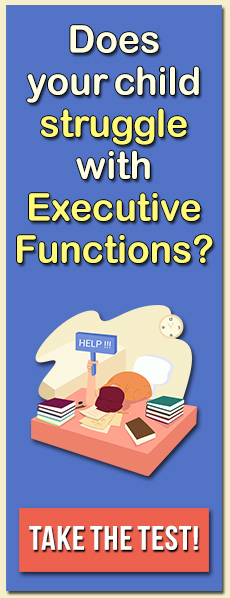Parenting children with slow processing speed can be an agonizing experience. Waiting for them to get ready for school, wondering how it could take so long just to pick up their toys, watching them spend hours doing homework. You feel their frustration as school assignments slowly eat away at their free time, but you can’t help but be frustrated with them sometimes. Does it have to be this difficult?
Parenting a child with slow processing speed requires a different mindset and parenting style than those used with typically developing children. Innumerable arguments and conflicts arise between parents and kids when slow processing speed isn’t clearly understood as a biologically-based process. All too often, parents and teachers view kids with slow processing as lazy, unmotivated, and inattentive. Realizing that these children have brain-base difficulty with working quickly and efficiently can bring some much-needed perspective.
With this knowledge you can learn to advocate for your child with slow processing speed, make accommodations when appropriate, and search for strategies that will improve their thinking skills. Here are some of our recommended parenting strategies for kids with slow processing speed:
Talk slowly. If you talk too fast, your child may miss important cues and details.
Simplify things. Provide brief instructions, one or two steps at a time.
Chunk routines. Help them learn and practice routines in ways that free up working memory and require fewer cognitive resources. Use chunking strategies or visual scheduling.
Get real. Set expectations that account for slow processing. Challenge them with time limits but stay realistic. Give them credit for trying.
Future sense. Help them think about the future by giving directions that aid skills like task initiation, time management, and planning. Practicing these skills can help them complete tasks faster.
On the clock. Use technologies that measure time and can provide reminders. Smart watches, phones, and fitness bands are great tools for providing feedback and reminders to stay on task and be aware of time constraints. The key with these technologies is to know what to do with them and to use them.
Guesstimate. Practice time-awareness skills with them. Estimate how long a car ride will take, how long it will take for water to boil, or how long a sporting event will last.
Time study. Monitor the average time daily activities require. Keep a record for at least a week of how much time is needed for daily tasks such as getting ready for school, taking a shower, or making lunch.
Use visual schedules. This is particularly useful for younger children. Post traditional photographs of your daily routines or set up a digital picture frame that can display picture reminders that slowly rotate at an appropriate pace.
Damage control. After your child has been diagnosed with slow processing speed by a psychologist or school therapist, it’s time to do a bit of damage control. If previously-undiagnosed slow processing speed has caused problems for your child at school, request a meeting with their teachers. Let them know what you’ve found out about slow processing speed as a brain-based condition and explain the steps you are taking to help them improve their skills. Ask for their cooperation with special accommodations.
For more information about the thinking skills affected by slow processing speed, and additional tips and strategies for practicing them, take a look at our pages for focus, planning, and time management. Think your child is affected by slow processing speed? Read “What is Slow Processing Speed in Children?” and “Processing Speed and Executive Functions” to learn more. We’ve also researched and gathered up the best web resources for helping a child with slow processing speed.
Featured image: Flickr user anjanettew





